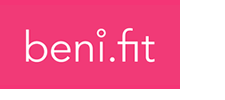Smart companies know that employee creativity is the source of their greatest accomplishments. However, in order to see the results of this creativity, it must be encouraged and fostered in the workplace.“Creativity is not the work of a solo genius or those who are deemed “artistic.” It can be taught, it can be learned, it can be practiced,” Chad Reynolds, the founder of Batterii, says. “Steve Jobs famously said, ‘Creativity is just connecting things.’…This is mostly right. However, if I had to iterate on this, I would say that ‘Creativity is connecting the right things.’”
Here’s a list of innovate ways that companies are providing the time and resources for employees to “connect the right things.”
15% Time
Most people have heard of Google’s “20% time,” but have you ever heard of 3M’s 15% time? 3M started this practice all the way back in 1948, allowing employees to use 15% of their time at work for personal projects that excited them.
The result? The Post-It-Note. 3M scientist, Art Fry, created this office staple during his 15% time in 1974, becoming the company’s most iconic product to date.
“It’s one of the things that sets 3M apart as an innovative company,” Kurt Beinlich, a technical director for 3M, says. “By sticking to that culture of giving every one of our employees the ability to follow their instincts to take advantage of opportunities for the company.”
20% Time
Although it’s debated whether Google still provides employees with 20% time, the results that came from its implementation in the past represent some noteable Google advances, including Gmail, AdSense and Google Talk.
In a 2004 Founders’ IPO letter to prospective investors, Google’s founders Larry Page and Sergey Brin spoke highly of the creativity tactic:
“We encourage our employees, in addition to their regular projects, to spend 20% of their time working on what they think will most benefit Google. This empowers them to be more creative and innovative. Many of our significant advances have happened in this manner.”
The Garage
Started in 2009 by Bill Gate’s old office turned techno-playhouse, “The Garage” has expanded nationally, with 7 locations and thousands of participating employees.
T. K. Rengarajan (“Ranga”), Corporate Vice President of Engineering for Microsoft, backs this innovative benefit wholeheartedly.
“Think about it,” Ragna says. “An engineer that’s motivated is easily 10 times more impactful than one that’s not. It’s a simple fact. My goal is to create an environment that inspires our engineers—and that makes Microsoft the best place to work and build their careers.”
Zen Rooms
Eventbrite built their office around the idea of “Helping Britelings be happier, healthier, more collaborative, and more productive.”
This includes Zen Rooms with low-lights and no noise. Employees can take a break, nap or meditate in this space.
In addition, Eventbrite changed up employee surroundings in order to boost creativity:
“We added lots of communal working areas, so employees can work where they’re feeling most creative and inspired — whether it’s at their regular desk, stadium seating, a standing desk or…a hammock,” EventBrite said.
Switch Teams
Ziba, an innovation counseling firm, sends employees to work with different teams for 3 month stints. In addition to a change of scenery, it allows employees to understand the specialities of different team members.
“People with different genetic backgrounds tend to have healthier children,” says Sohrab Vossoughi, CEO of Ziba. “It’s the same with ideas as it is with biology.”
Food For Thought
Asana, an app founded by Dustin Moskovitz and Justin Rosenstein (ex-facebookers) believes in feeding their employees creativity, literally.
Asana’s office has a commercial kitchen staffed with two full-time chefs. They offer three daily gourmet, organic meals to boost productivity and keep employees healthy.
Unstructured Time
Intuit, the company that made Turbotax, gives employees 3 months of unstructured time. This time can be used at once or spread out over a period of 6 months for “part-time exploration.”
How do you inspire employee creativity? Share your ideas with us, and we’ll include them in our post.


